In hospital fires from last 5 years, a pattern — accused escape punishment, safety only on paper
The Indian Express looked at hospital fires with a minimum casualty of 5 and found a pattern of cutting corners, lack of punitive action & cases stretching on.
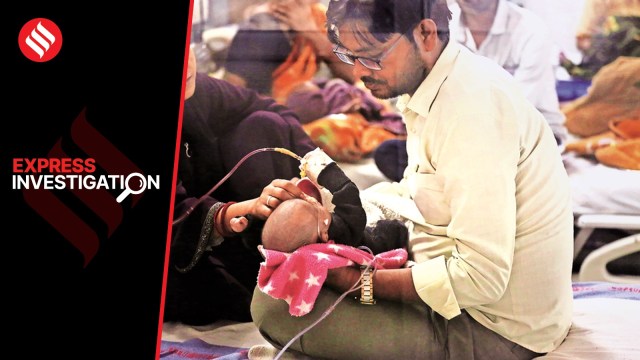 A rescued newborn after being shifted from the NICU ward of Maharani Laxmi Bai Medical College in Jhansi, where 18 newborns died last month. (Express photo by Vishal Srivastav)
A rescued newborn after being shifted from the NICU ward of Maharani Laxmi Bai Medical College in Jhansi, where 18 newborns died last month. (Express photo by Vishal Srivastav)When a fire at a government hospital killed 18 newborns in Jhansi last month, the headlines were all too familiar – a possible short circuit, a healthcare system operating beyond capacity, and high-level probes to fix responsibility.
The Indian Express looked at the cause and aftermath of 11 prominent hospital fires in the last five years, which claimed 107 lives, and found that in all but one case from earlier this year, the accused – hospital owners or heads – are out on bail. Significantly, in seven instances, court cases are still dragging on.
The Indian Express looked at hospital fires that claimed five or more lives. To be sure, this is a fraction of the total hospital or clinic fires in the past half-decade – between January 2020 and October 2024, there were at least 105 such reported incidents.
Significantly, there was an increase in fatal fire incidents during Covid-19 – nine of the 11 incidents The Indian Express looked at took place in 2020, 2021 and 2022. Five took place in 2021 when the pandemic was at its peak and the healthcare system was overstretched.
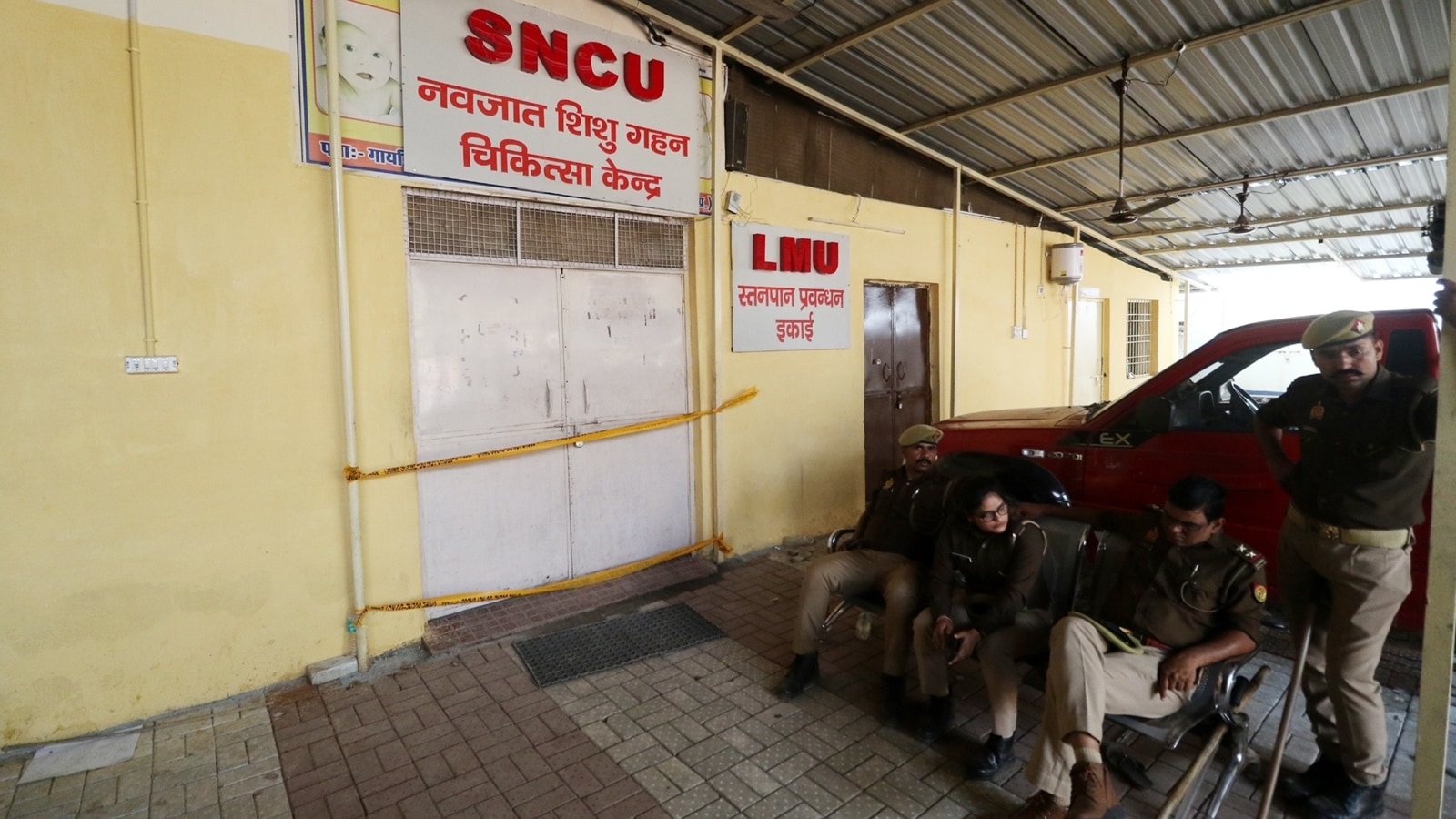 Police outside the NICU ward of the hospital in Jhansi. (Express photo by Vishal Srivastav)
Police outside the NICU ward of the hospital in Jhansi. (Express photo by Vishal Srivastav)
There were many other startling revelations – at least eight of the 11 fires were likely caused by short circuits, with improper maintenance of electrical lines and equipment to blame; several hospitals ignored basic safety measures and lacked firefighting equipment like extinguishers, hoses, sprinklers and well-trained staff; and the government agencies failed to keep a check on hospitals running on expired fire certificates, violating construction norms, and missing key safety measures in place.
The findings:
Bail is the norm
📌 Barring the fire in Delhi, which took place this year, the accused in all other cases have been granted bail. The FIRs were registered under sections such as 304 (culpable homicide not amounting to murder), 304A (causing death by negligence), 336 (acts that endanger the personal safety or life of others), 337 (causing hurt to another person by acting rashly or negligently), and 34 (common intention), among others.
📌 At least seven of the 11 court cases are still underway – indicating how long the judicial process can stretch.
📌 Moreover, in seven of the 11 cases, the owner or doctors against whom the cases were filed have either started practising elsewhere or working as part of hospital management.
📌 In one of the cases, Ahmednagar Civil Hospital, the accused is a government employee, and prosecution sanction sought from the government health department in 2022 is still pending. In another case, RC Hazra Memorial Hospital in Dhanbad, the doctors who owned the hospital also died in the fire. No criminal action was initiated in the case of the Bhandara district hospital fire.
📌 Two of the 11 hospitals — both government-run medical institutions in Maharashtra — remain functional. When it comes to Gujarat’s Patel Welfare Hospital, the fire took place in a new temporary structure set up during Covid-19. The hospital continues to run from its old building. Similarly, in Gujarat’s Uday Shivanand Hospital, an eye hospital continues to be run from the ground floor of the structure, where the fire took place in a Covid-19 centre being run on the first and second floor. When it comes to Ramesh Hospital, which was running a Covid-19 centre at Swarna Palace hotel, permission to lease places to treat Covid-19 patients was cancelled by the government. The hospital remains functional within its own complex.
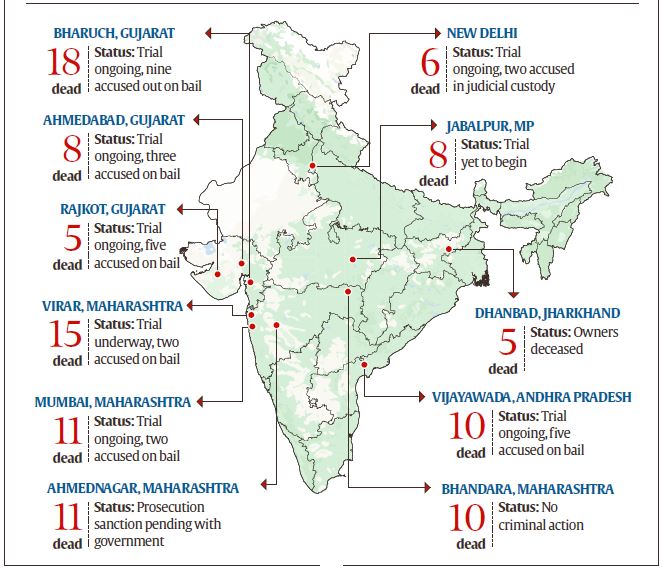
Ill-maintained and ill-equipped hospitals
In nine incidents, requisite fire safety measures were not in place. Not only were hospitals ill-equipped to tackle a blaze, but lack of maintenance of electrical lines and equipment was a direct cause of the fire in at least six cases.
📌 In Gujarat’s Patel Welfare Hospital, where 18 persons, including two nurses, died on May 1, 2021, false records were allegedly submitted by the management to show that fire extinguishing and protection systems were installed “when in fact no such action was taken”, noted the report of an inquiry commission headed by retired justice DA Mehta set up to investigate the incident. The fire was allegedly caused by a loose wire from a ventilator.
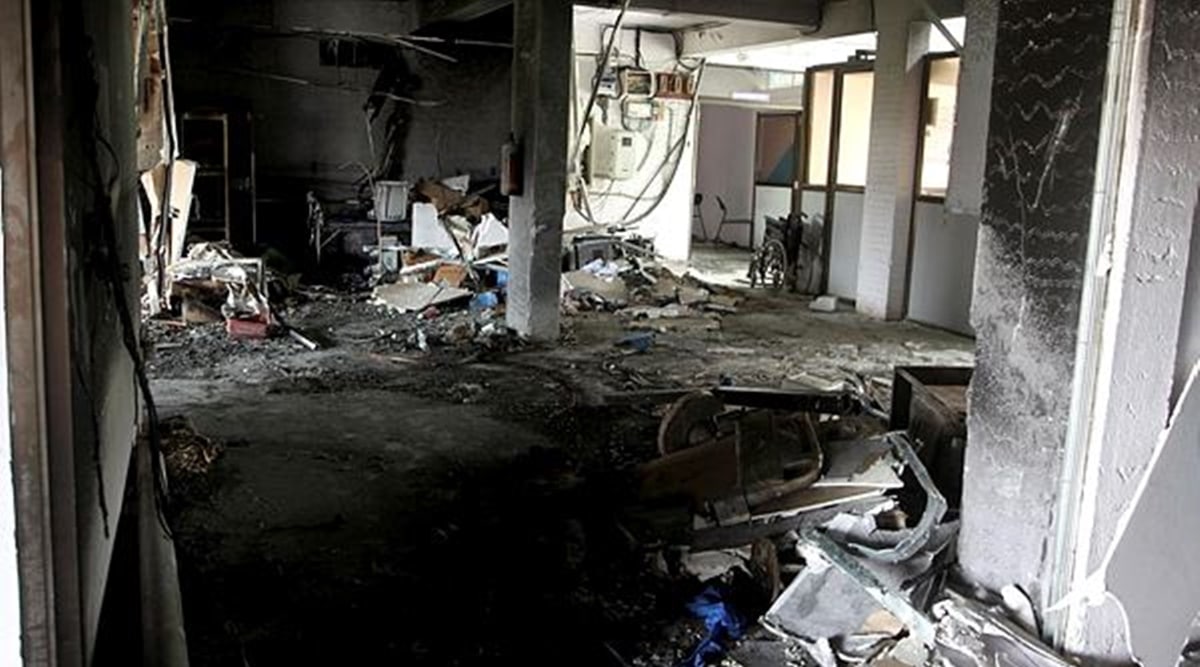 The Welfare Hospital in Bharuch district. (Express photo by Bhupendra Rana)
The Welfare Hospital in Bharuch district. (Express photo by Bhupendra Rana)
📌 In Maharashtra’s Vijay Vallabh Hospital, where 15 persons died on April 23, 2021, an expert committee found alleged shortcomings in firefighting systems. According to sources familiar with the probe of an expert committee, the hospital allegedly did not have functional sprinklers. Maharashtra’s fire safety norms state that all hospitals, irrespective of height, should have fire extinguishers, hose reels, sprinklers, automatic fire detection and alarm systems, and terrace tanks and pumps. The investigation also found that the hospital allegedly did not have a no-objection certificate from the department concerned. The blaze allegedly took place because of a spark in an AC that was run round the clock despite not being of sufficient capacity, the investigation found.
📌 An audit by the civic fire brigade carried out before the fire at Maharashtra’s Ahmednagar Civil Hospital, where 11 persons died on November 6, 2021, had suggested setting up a firefighting system. The hospital allegedly did not have water sprinklers or smoke alarms, and staff were not trained in using fire extinguishers. The same audit also found that crucial fire safety systems were allegedly not put in place due to fund shortages.
📌 At Maharashtra’s Bhandara district hospital, where 10 persons died in a fire on January 9, 2021, voltage fluctuation and wear and tear in the control panel allegedly led to a short circuit and caused the fire, found Nagpur Commissioner Sanjeev Kumar and the six other officials investigating the incident.
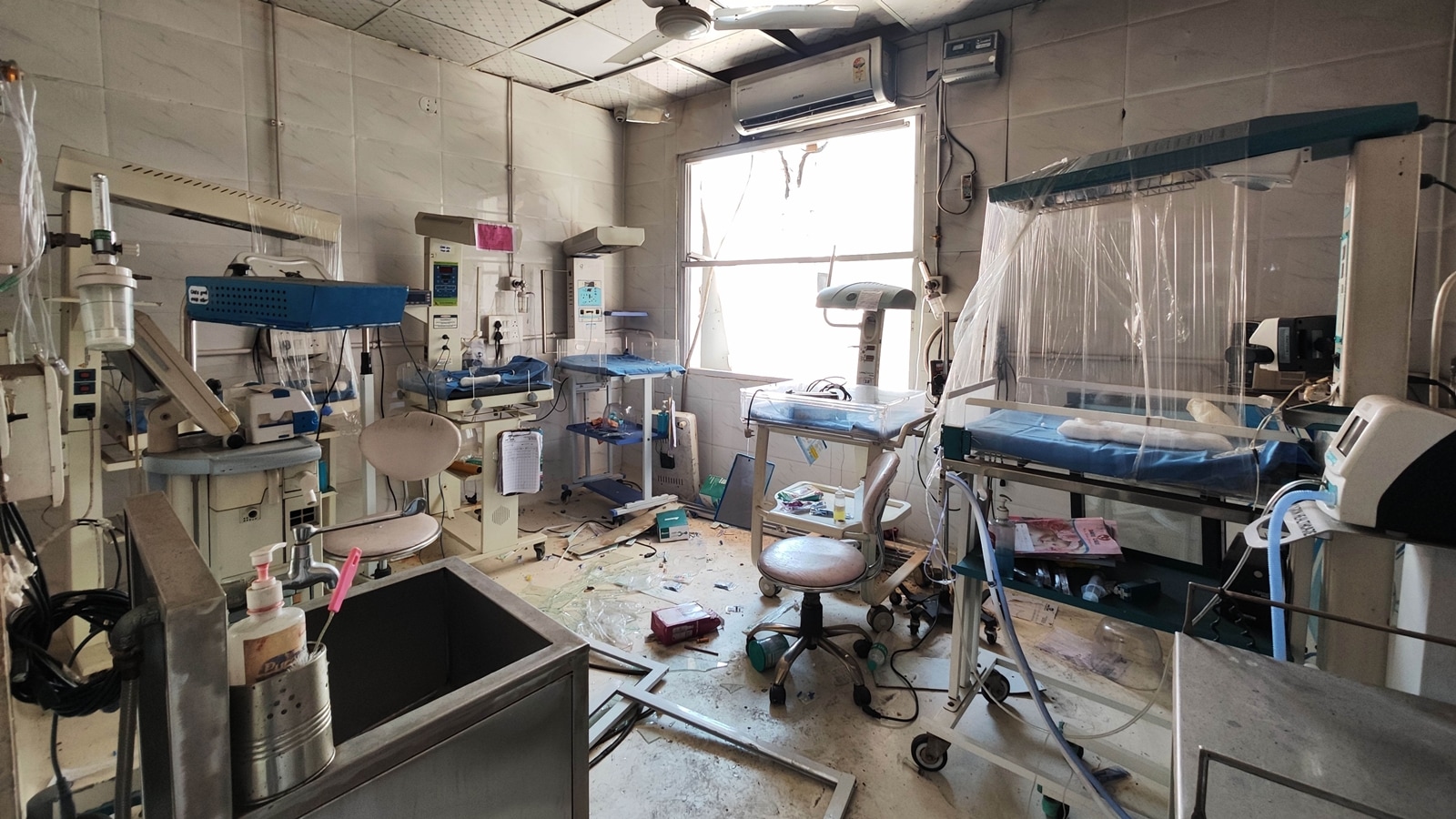 There was an increase in fatal fire incidents during Covid-19 – nine of the 11 incidents.
There was an increase in fatal fire incidents during Covid-19 – nine of the 11 incidents.
📌 After years of not getting permission, Mumbai’s Sunrise Hospital, where 11 persons perished in a fire on March 26, 2021, was allowed to start functioning within a mall during the pandemic based on a temporary certificate. During the firefighting operations, it was noticed that mechanisms such as sprinklers were inactive, according to Deputy Municipal Commissioner of Disaster Management and former Chief Fire Officer Prabhat Rahangdale.
📌 Andhra Pradesh’s Hotel Swarna Palace, which was converted into a Covid care centre, allegedly had no fire alarms, sprinklers, or other firefighting equipment, a probe by a government committee found following the death of 10 persons on August 9, 2020. The electrical system was found to be outdated and incapable of handling the number of ACs that were running.
📌 Madhya Pradesh’s New Life Hospital, where eight persons died on August 1, 2022, allegedly had an absence of alternative exits, poor ventilation, and insufficient fire extinguishers and hose roll, the probe by a high-level government committee headed by the divisional commissioner (revenue) found. The fire was caused by excessive heating of the electric generator set, despite reminders by the company to the hospital urging them to service the machine, the probe found.
📌 Gujarat’s Shrey Hospital, where eight persons died in a fire on August 6, 2020, allegedly did not have the recommended two emergency exit stairs. The fire started due to a short circuit in a patient monitor, which was 15 years old, three times its prescribed life span, the probe by an inquiry commission headed by retd Justice DA Mehta found.
📌 In Delhi’s Baby Care New Born Hospital, where six infants died in a fire earlier this year on May 25, fire safety equipment was allegedly lacking, the hospital had 12 beds instead of the sanctioned five, and it had stored too many oxygen cylinders in a hazardous manner, the police probe found.
📌 At Gujarat’s Uday Shivanand Covid-19 hospital, where five persons died on November 27, 2020, a government commission headed by then additional secretary (panchayat and rural housing) A K Rakesh tasked with investigating the incident found that the emergency exit was “closed and blocked” by medical equipment and the management had not followed fire safety guidelines. The commission concluded that the plausible source of the fire could have been a ventilator with defective wiring inside.
 The probes into the fires also found alleged violations of building codes, illegal construction, and instances of government departments falling short in their duty.
The probes into the fires also found alleged violations of building codes, illegal construction, and instances of government departments falling short in their duty.
Violation of building codes, lack of oversight
The probes into the fires also found alleged violations of building codes, illegal construction, and instances of government departments falling short in their duty.
📌 Government commissions under retd Justice DA Mehta, set up to look into two of the three hospital fires in Gujarat — at Shrey Hospital and Patel Welfare Hospital – highlighted the government’s practice of regularising unauthorised constructions for a fee. This meant that building owners could just pay authorities to regularise construction that was not part of the plan initially approved by them. The commission investigating the Shrey Hospital fire noted that “there cannot be (such) a blanket policy” and that clinical and educational premises should not be permitted to operate in illegally constructed structures. The commission also noted that the fatalities could have been prevented had the unauthorised structures not been approved. The commission investigating the Patel Welfare Hospital fire recommended that the state undertake a “serious relook” at the policy of regularising unauthorised construction, “more specifically in case of nursing homes and/or hospitals.” “If unauthorised construction in and on the premises of Patel Welfare Hospital, Bharuch would not have been regularised, the fatalities could have been avoided,” it noted.
📌 Madhya Pradesh’s New Life hospital allegedly operated on two floors despite permission for only one, a probe by the government commmittee found. The building allegedly lacked a completion certificate. The probe also found that the fire engineer had allegedly made an erroneous fire plan; there was no action against the hospital even though it violated building permissions; and there was no action by the municipal corporation of Jabalpur one year after the provisional fire NOC lapsed. In the aftermath of the case, action was initiated against officials who inspected the hospital and gave it a fitness certificate, as well as against the Chief Medical and Health Officer who granted a license to the health facility.
 In the case of the national capital, only buildings over the height of 9 metres or more than two storeys needed a fire NOC. This meant that Baby Care New Born Hospital, which operated on the ground plus one floor, did not require an NOC at all.
In the case of the national capital, only buildings over the height of 9 metres or more than two storeys needed a fire NOC. This meant that Baby Care New Born Hospital, which operated on the ground plus one floor, did not require an NOC at all.
📌 Maharashtra’s Sunrise Hospital allegedly violated several building norms. Located inside a mall, it stood 2.7-3 metres high, less than the mandatory 3.6 metres. A planned escalator was allegedly removed to construct a dedicated lift for the hospital. Documents of the Brihanmumbai Municipal Corporation also show that a deputy engineer from its Building Proposals Department had warned the civic body not to allow the hospital to function in 2020. Further, the hospital had received a fire NOC from a third-party agency stating that all firefighting measures were in place. Following the fire, the NOC issued a few months before the incident was cancelled, and the fire safety auditor from the third-party agency was arrested.
📌 In the case of the national capital, only buildings over the height of 9 metres or more than two storeys needed a fire NOC. This meant that Baby Care New Born Hospital, which operated on the ground plus one floor, did not require an NOC at all. After the incident, Delhi health minister Saurabh Bharadwaj announced that all hospitals, regardless of size, would require a fire NOC. This is yet to be implemented.
With additional reporting by Nayonika Bose, Anand Mohan J, Abhishek Angad, Gopal B Kateshiya, Kamaal Saiyed, Anuradha Mascarenhas, Sushant Kulkarni, Siddhant Konduskar & Aditi Raja



- 01
- 02
- 03
- 04
- 05




























